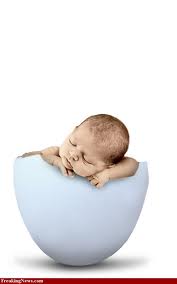Sudden infant death syndrome (SIDS)
According to SIDS and Kids, SIDS is defined as the sudden and unexpected death of an infant less than one year of age during their sleep that remains unexplained after a thorough investigation (autopsy, medical history, circumstances of death).
SIDS is the main cause of death in infants less than one year of age. The peak time for SIDS deaths to occur is between the ages of 2 and 4 months. Although it can happen to younger babies and older infants, approximately 90% of SIDS deaths occur in babies aged less than 6 months.
 A great deal of research has been carried out on SIDS and, although no sure method of prevention has been discovered, experts have devised a list of risk factors. According to SIDS and Kids, since the Reducing the Risk of SIDS program was first introduced in Australia in 1990, SIDS deaths have reduced by 84% in Australia. In 1989, 513 babies died of SIDS. In 2003 this number had dropped to 73.
A great deal of research has been carried out on SIDS and, although no sure method of prevention has been discovered, experts have devised a list of risk factors. According to SIDS and Kids, since the Reducing the Risk of SIDS program was first introduced in Australia in 1990, SIDS deaths have reduced by 84% in Australia. In 1989, 513 babies died of SIDS. In 2003 this number had dropped to 73.
Three ways to reduce the risk of SIDS:
- Put the baby on its back to sleep. The risk of SIDS is increased if babies sleep on their belly or side. Babies are best placed on their backs to sleep.
- Make sure the baby's head remains uncovered during sleep. If a baby's head becomes covered during sleep the risk of SIDS is increased. Loose bedding material can cover the baby's head, so ensure you securely tuck the baby in so they cannot slip under the bedclothes. Consideration should be given to:
- Making sure the baby's head remains uncovered during sleep
- Not putting the baby on a water bed or bean bag
- Taking a baby into an adult bed may be unsafe
- The baby may get caught under the bedding or pillows
- Become trapped between the wall and the bed
- Fall out of bed
- Be rolled on by someone who sleeps very deeply or who has taken medicine, drugs or alcohol that can cause them to sleep heavily
- Placing the baby on its back to sleep
- Using a firm, clean, well-fitting mattress
- Tucking in the baby's bedclothes securely
- Positioning the baby's feet at the bottom of the cot
- Not using quilts, doonas, duvets, pillows, soft toys and cot bumpers in the cot
- Keep the baby smoke free, before and after birth.
The risk of SIDS is increased if the mother smokes during pregnancy. There is also some evidence to suggest if fathers smoke while the mother is pregnant the risk of SIDS is increased.
A SIDS death affects all who are involved. Parents and near relatives become distraught, especially as there appears no reason for the death. Friends and neighbours are also affected and the attending ambulance crew, police and medical staff are not unaffected.
It is a highly emotional incident and as a first aid provider, perhaps with initial contact, you are also at risk of emotional involvement. It is difficult, but you will be expected to provide support for others and your objectivity may be tested.
Signs and symptoms
- No signs of circulation
- unconscious
- absent respirations
- absent pulse
- Cyanosis (bluish colour)
Care and treatment
- Quickly and carefully examine the infant
- If in doubt, ATTEMPT RESUSCITATION
- Leave the infant as found, avoid disturbing bedclothes
- Contact ambulance and advise 'suspected SIDS'
- Comfort parent(s), assist in obtaining support, relatives, etc.
- Remain on scene until police arrive and provide information
In Australian States and Territories police become involved in an unexpected death automatically as it becomes the subject of a coroner's investigation. The attending police officers will advise the child's parents of all necessary formalities.
The police offices are not there to indicate or attribute blame. If you are unfortunate enough to become involved in a SIDS case, you have been involved 'at the sharp end'. Although you may not think so, you have been emotionally affected.
Ensure you talk the incident through with somebody, especially with someone who will understand. If you don't know anyone close with whom you may wish to share your feelings, contact the ambulance crew who attended. They will be only too willing to share it with you - they understand your feelings and know what an emotional trial it has been.
For more information, contact SIDS and Kids for written material, support or advice
Useful resource "SIDS and Kids" 1300 308 307 "www.sidsandkids.org"